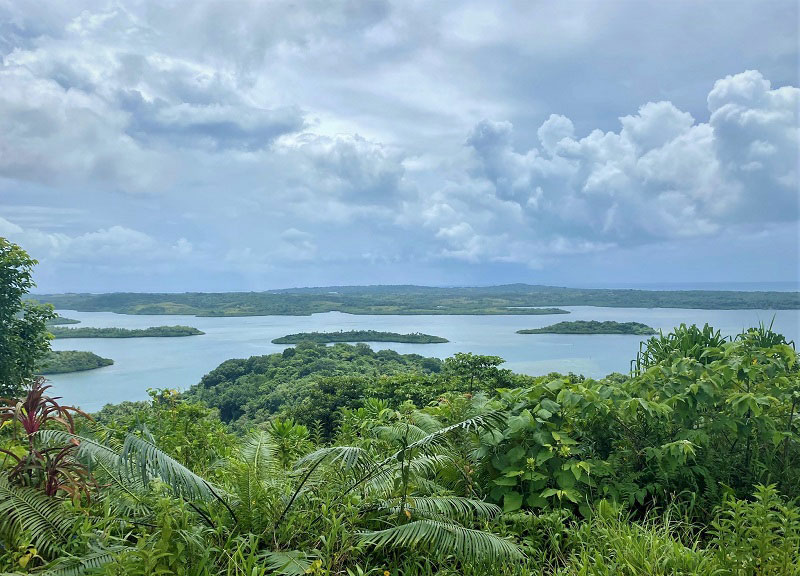1. Scuba Diving with Mantas – Uniquely, Yap is home to one of the few Manta Ray Sanctuaries in the world and is a place where you can consistently encounter these majestic creatures year-round. Dive into our clear waters as observe these gentle giants as they come into the lagoons each day to feed and to have their bodies cleaned by small fish at areas called cleaning stations. During mating season from December to April, they form a train-like chain as the males follow the females in a state of courtship. Beyond mantas you can do shark dives, witness the mandarin fish mating ceremony, and encounter green sea turtles, dolphins and even pilot whales.
2. VillageCultural Heritage Tour – A village tour is the ideal way to experience Yap’s traditional culture and heritageand to learn about the traditions of the Yapese people. View traditional men’s houses and ancient stone money discs unique to Yap, and the stone money banks where they are displayed. Participate in local ceremonies and dances andlearn traditional skills such as coconut rope making, basket weaving and traditional medicine usage. Learn about traditional navigation and the methods and skills of building the local canoes. Savour Yapese cuisine of delicacies made from taro, breadfruit, fresh seafood and tropical fruits. Make sure and try the local ceviche as well as tuba, the locally fermented alcohol made from coconut flowers.
3. Explore Yap’s Rich World War II History – Strategically located between the Philippines and Guam, Japanese-occupied Yap was targeted almost daily by American aircrafts from June of 1944 to August of 1945. This has resulted in several historical sites and wreckages on land and in the water that offer visitors a profound glimpse into the island's wartime past. Numerous historical marker signs dot the island identifying 15 accessible sites with plane wreckages, gun batteries, bunkers, tunnels and memorials to fallen soldiers.Pick up a copy of the special World War II brochure from the Yap Visitors Bureau.
4. Hiking and Walking – Hike the popular3.5-mile (5.5 km)Tamilyog Trail in the middle of the island that connects the village of Kanif on Yap’s West coast to the village of Dachangar over the hill. This hike is of moderate intensity and can be done in under 1 hour or you can spend may hours observing the plant life, many species of birds and lovely views of hills and the sea. You can also opt to doing shorter hikes/walks around the capital Colonia on ancient and unique stone walking paths. Here you will pass numerous stone money discs and even a stone bank, beautifully lined with lots of flowering plants, trees and other vegetation.An uphill trek along the road to the wind farm turbines overlooking Colonia is also a good hike, offeringstunning panoramic viewsof the capital, the bay and some World War II historical sites.
5. Rumung Island Tour – Tour the smallest and northernmost island that makes up Yap proper which hosts the largest stone money in all of Yap. A very scenic 15-minute boat ride from Colonia through the mangrove channel and some open sea gets you to Rumung where you will be greeted by an impressive men’s house. A very scenic walk on a centuries old stone path provides encounters with the three (3) largest stone money discs on Yap, stone money banks and a small Japanese WWII shrine. A beautifully designed and adorned community house is at the end of the walking part of the tour, where refreshing coconuts are served. This tour can also be expanded to offer swimming, snorkelling and a picnic lunch on a nearby beachbefore returning to Colonia.


















